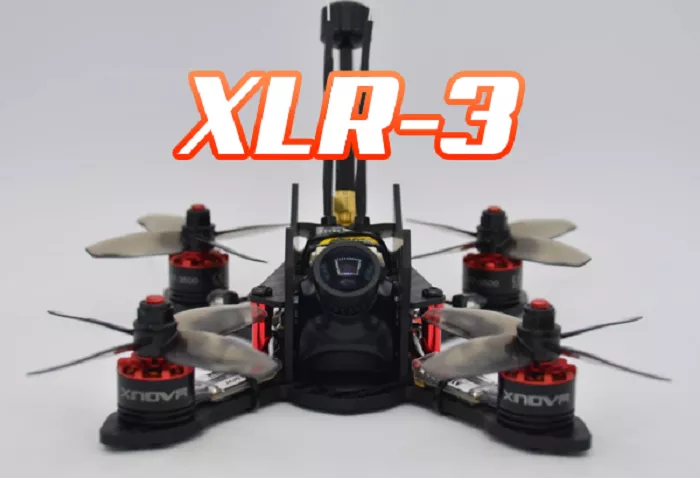The XLR V3 is a custom-built racing drone that has captured global attention for its remarkable speed and engineering. Designed and piloted by American engineer Ryan Lademann, the XLR V3 holds the Guinness World Record for the fastest ground speed achieved by a battery-powered remote-controlled quadcopter. This article provides a comprehensive overview of the XLR V3, detailing its specifications, design, and the record-breaking performance that sets it apart in the world of drone racing.
Guinness World Record Achievement
On November 8, 2022, in Scottsdale, Arizona, the XLR V3 achieved an average speed of 224 mph (360.5 km/h) over two runs in opposite directions, as required by Guinness World Records to account for wind conditions. The drone reached a peak speed of 257.25 mph (414 km/h) during these tests . This performance surpassed the previous record of 163.5 mph (263 km/h) set in 2017 by the DRL Racer X .
How Fast Is the XLR V3?
The XLR V3 is one of the fastest FPV drones in its class, reaching speeds of 100–120 mph (160–193 km/h) in ideal conditions. However, with the right setup (high-KV motors, lightweight props, and a powerful battery), some pilots have pushed it close to 130 mph (209 km/h).
Speed Comparison Table
| Drone/Vehicle | Top Speed (mph) |
|---|---|
| XLR V3 (Stock) | 100–120 |
| XLR V3 (Tuned) | Up to 130 |
| DRL Racer X (World Record) | 179.6 |
| DJI Mavic 3 (Consumer Drone) | 47 |
| Cheetah (Fastest Land Animal) | 60–70 |
As you can see, the XLR V3 is significantly faster than most consumer drones and even rivals some of the fastest racing drones in the world.
Technical Specifications
The XLR V3’s impressive speed is the result of meticulous design and high-performance components:
- Weight: 490 grams
- Motors: Cobra 2207 2450kv
- Electronic Speed Controllers (ESCs): Spedix ESCs
- Battery: Tattu R-Line 6S LiPo
- Flight Controller: HGLRC Zeus F722 Mini
- GPS Module: Beitian BN-180
- FPV Camera: Caddx Ant
- Propellers: APC 5.2 x 6.0
These components work in harmony to deliver the drone’s exceptional performance .
XLR V3 vs. Other Racing Drones
How does the XLR V3 compare to other popular racing drones?
| Drone Model | Top Speed (mph) | Key Strengths |
|---|---|---|
| XLR V3 | 100–130 | Durability, Speed, Customization |
| iFlight Nazgul5 | 90–110 | Great for beginners, Good balance |
| Emax Hawk 5 | 80–100 | Affordable, Reliable |
| DRL Racer X | 179.6 (World Record) | Pure speed, Not for sale |
The XLR V3 stands out because of its perfect balance of speed, durability, and customization options.
Aerodynamic Design
Unlike conventional quadcopters, the XLR V3 features a unique vertical chassis design encased in an aerodynamic shell. The motors are housed in bullet-like nacelles suspended from the main chassis on slim, low-drag struts. This configuration minimizes air resistance and allows the drone to achieve higher speeds .
Development Journey
Ryan Lademann’s pursuit of speed began in 2016 with a personal challenge to break 150 mph. After achieving 172 mph with the VXR frame in 2017, he continued to refine his designs. The XLR V3, developed over several years, culminated in the record-setting flight in 2022 .
Record Verification Process
To ensure the accuracy of the speed record, the XLR V3 was flown over a 100-meter course in both directions, with the average speed calculated from these runs. This method accounts for variables such as wind and ensures a fair assessment of the drone’s capabilities .
Impact on Drone Racing
The XLR V3’s achievement has significant implications for the drone racing community:
- Technological Advancement: It showcases the potential for high-speed drone design and engineering.
- Inspiration: It motivates other enthusiasts to push the boundaries of drone performance.
- Innovation: It encourages the development of new materials and designs to achieve greater speeds.
Conclusion
The XLR V3 stands as a testament to the possibilities within drone engineering and racing. Its record-breaking speed, achieved through a combination of innovative design and high-performance components, sets a new benchmark in the field. As technology continues to advance, the pursuit of speed in drone racing promises even more exciting developments in the future.


